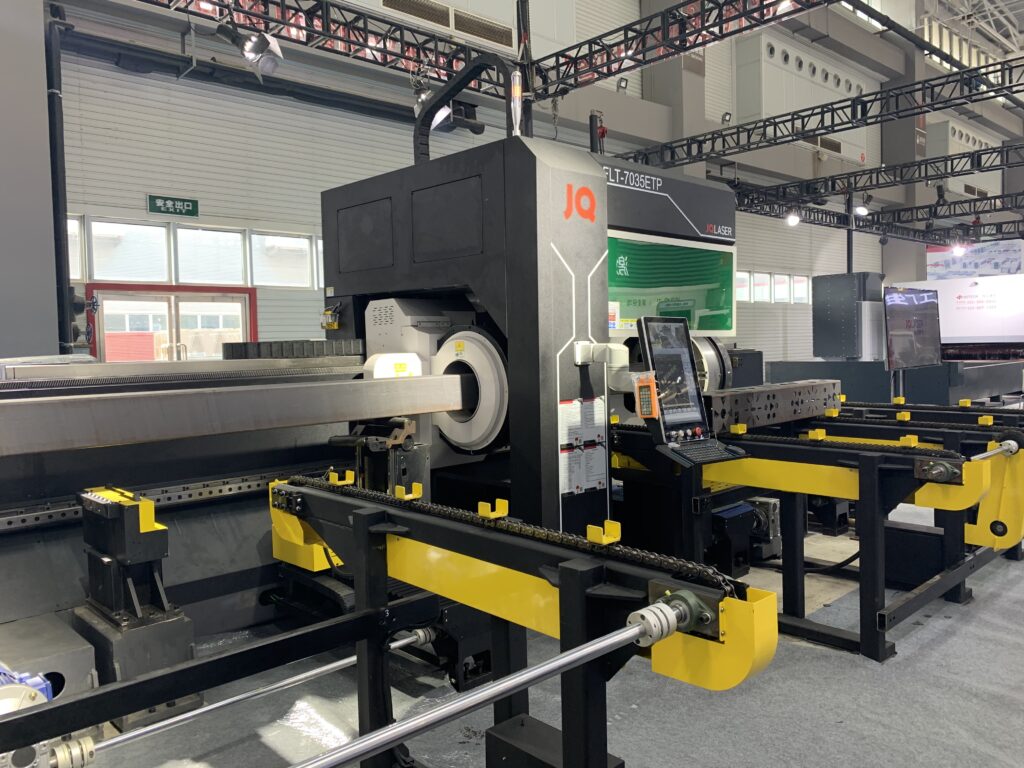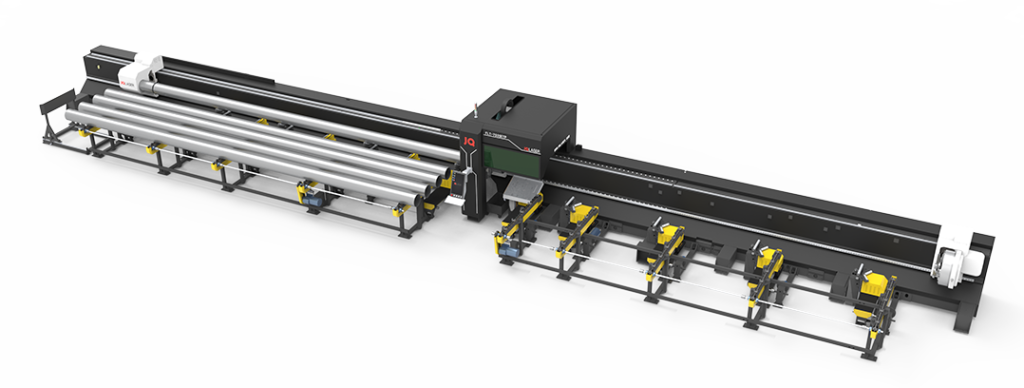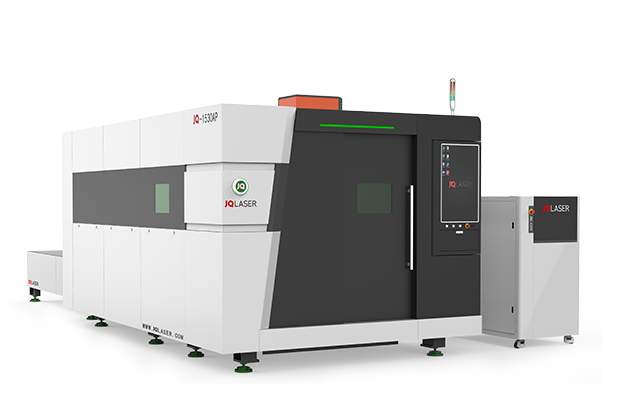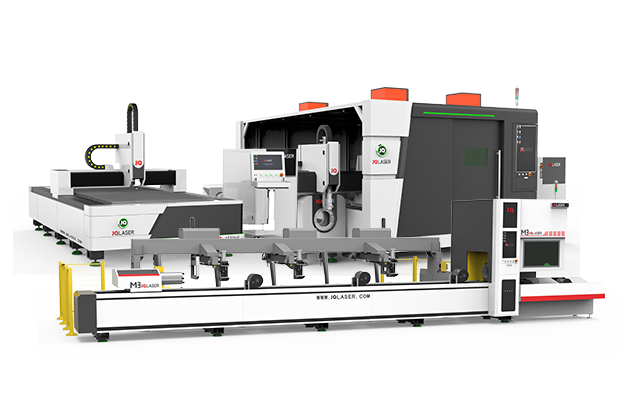What are the main differences between laser cutting and mechanical cutting?
Laser cutting is a thermal cutting process that uses a laser to melt material in a localized area. The molten material is then ejected from the cut by the force of the laser beam. This process is generally used for cutting metal and plastic.
Mechanical cutting, on the other hand, uses a spinning blade or other sharp objects to physically cut through material. This process is generally used for cutting wood and other materials that are not as difficult to cut through as metal or plastic.
Laser cutting is a technology that uses a laser to cut materials, and is typically used for industrial manufacturing applications, but is also starting to be used by schools, small businesses, and hobbyists. Laser cutting works by directing the output of a high-power laser most commonly through optics. The laser optics and CNC (computer numerical control) are used to direct the material or the laser beam path.
Mechanical cutting is a process that uses tools to cut and shape materials. The tools may be handheld or powered. The term “mechanical cutting” can refer to a wide variety of cutting methods, including sawing, grinding, drilling, and abrading.
Laser Cutting Advantages: Speed, Accuracy, Low Cost.

Both laser cutting and mechanical cutting have their advantages and disadvantages. Laser cutting is generally more precise and can produce cleaner cuts than mechanical cutting. Laser cutting can also be done on a wider range of materials, including metals, plastics, and glass. Mechanical cutting is typically faster than laser cutting and can be done on thicker materials.
Laser cutting is a technology that has been around for decades, but has only recently become widely available to consumers. Laser cutting has many advantages over traditional cutting methods, such as speed, accuracy, and low cost.
Speed: Laser cutting is much faster than traditional cutting methods. A laser can cut through the material much faster than a knife or saw.
Accuracy: Laser cutting is much more accurate than traditional methods. Lasers can cut very precise shapes and patterns.
Cost: Laser cutting is relatively low cost. The equipment is relatively inexpensive, and there are no consumables (such as blades or saws) that need to be replaced.
Materials: Laser cutting can be used on a variety of materials, including wood, plastic, metal, and glass.
Tips for Using a Laser Cutter
Here are a few tips for using a laser cutter:
Always wear safety glasses when using a laser cutter.
Be sure to test your settings on scrap material before cutting your final piece.
If your material is not flat or uniform, try using a lower power setting.
If you are having trouble getting the laser to cut through your material, try using a higher-power setting.
If you are having trouble getting the laser to cut accurately, try using a lower speed setting.
If you are having trouble getting the laser to cut detail into your material, try using a higher speed setting.
Laser Cutting Disadvantages: Reduced Detail, More Waste.
Laser cutting is a technology that has been around for decades, but it has only recently become widely available to consumers. Laser cutting is a process where a high-powered laser is used to cut through materials. The laser heats the material until it vaporizes, and the laser beam is then able to cut through the material.
There are some disadvantages to laser cutting, however. One disadvantage is that laser cutting can reduce the detail of material. This is because the laser beam can cause the material to warp, which can reduce the level of detail that is possible.
Another disadvantage of laser cutting is that it can produce more waste than other methods. This is because the laser beam can cause the material to vaporize, which can create a lot of smoke and debris. This waste can be difficult to clean up, and it can also be dangerous to people and animals who are nearby.
Mechanical Cutting Advantages: Higher Detail, Better Quality.
The biggest advantage of mechanical cutting is the level of detail that can be achieved. With other methods, such as chemical or thermal cutting, the material is simply melted or burned away, which can leave behind a rough or jagged edge. With mechanical cutting, the tool removes material in very small increments, so the edge is much smoother and more precise.
This higher level of detail also means that mechanical cutting can produce a better quality final product. When cutting metals, for example, the process can leave behind a very smooth and shiny surface. This is due to the fact that mechanical cutting removes material in very small pieces, as opposed to melting or burning it away.
Another advantage of mechanical cutting is that it can be performed on a variety of different materials. As mentioned above, it is mostly used for metals, but can also be used for other materials, such as wood or plastic. This makes it a versatile process that can be used for a wide range of applications.
Overall, mechanical cutting has many advantages over other methods of cutting. It can produce a higher level of detail and quality, and can be used on a variety of different materials. If you need a precise and high-quality cut, mechanical cutting is the way to go.
Mechanical Cutting Disadvantages: More Waste, More Time.
Mechanical cutting methods have several disadvantages when compared to traditional manual methods. One of the biggest disadvantages is that mechanical cutting methods produce more waste. This is because the machines are not as precise as humans and often end up cutting more material than necessary. This waste can add up quickly, especially if you are working on a large project.
Another disadvantage of mechanical cutting is that it can take more time. This is because machines are often slower than humans and require more set-up time. This can be a major issue if you are working on a tight deadline.
Overall, mechanical cutting methods have several disadvantages that you should keep in mind before deciding to use them. However, they can still be useful in some situations. If you decide to use a mechanical cutting method, be sure to factor in the increased waste and time requirements.
How do manufacturers choose between laser cutting and mechanical cutting?
For a manufacturing company, it can be difficult to choose between laser cutting and mechanical cutting when it comes to production. The two technologies have different strengths and weaknesses, and it is important for the company to decide which one will give them the best results. Laser cutting is faster than mechanical cutting, but it can also be less precise. Mechanical cutting is slower than laser cutting, less precise. It often comes down to cost-benefit analysis when deciding which technology to use in a particular production process.





